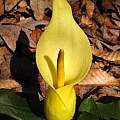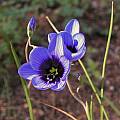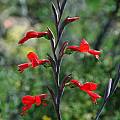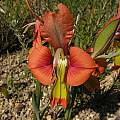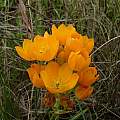Hello Piotr,
This is a most interesting thread!
Stagonospora is not really my problem with Amaryllids. The most annoying pest I have here in Portugal is Narcissus fly. I have never seen them but I find the empty, rotting bulbs. Some genera seem to be less affected, like Amaryllids belladonna and Nerine but Hippeastrum, Zephyranthes and Habranthus, Sternbergia and the larger Narcissus themselves are affected to the point of disappearing entirely. Growing in shade does not help.
The second pest are voles. I have to grow valuable bulbs in pots. Hippeastrum and Iridaceae like species gladiolus, Ixia, Babiana are particularly vulnerable. And Lilium, of course.
Chileflora is notorious for their bad or non existing communication with customers, there were rumors that they had closed down but it is good to know that they are still there. I have grown some very good plants like Alstroemerias from their seed. The quality of their seed has always been very good.
If you are just starting to grow bulbs from seed: are you familiar with the WIKI? Here is a link to a very good article https://www.pacificbulbsociety.org/pbswiki/files/00_others/McGary_bulbs_from_seed.pdf
I have also written one for the Bulb Garden which I can let you have. (Need your email address) I can only recommend to raise bulbs from seed, it is so rewarding. Nothing more exciting than the first flower from a batch of your own seedlings.
If you read several articles on this subject you will see that many ways lead to success which means that you will eventually find your own best way, this applies to the seed substrate as well. And then it is worthwhile sharing your experience because there is always something new to discover for others.
Bye for now
Uli
This is a most interesting thread!
Stagonospora is not really my problem with Amaryllids. The most annoying pest I have here in Portugal is Narcissus fly. I have never seen them but I find the empty, rotting bulbs. Some genera seem to be less affected, like Amaryllids belladonna and Nerine but Hippeastrum, Zephyranthes and Habranthus, Sternbergia and the larger Narcissus themselves are affected to the point of disappearing entirely. Growing in shade does not help.
The second pest are voles. I have to grow valuable bulbs in pots. Hippeastrum and Iridaceae like species gladiolus, Ixia, Babiana are particularly vulnerable. And Lilium, of course.
Chileflora is notorious for their bad or non existing communication with customers, there were rumors that they had closed down but it is good to know that they are still there. I have grown some very good plants like Alstroemerias from their seed. The quality of their seed has always been very good.
If you are just starting to grow bulbs from seed: are you familiar with the WIKI? Here is a link to a very good article https://www.pacificbulbsociety.org/pbswiki/files/00_others/McGary_bulbs_from_seed.pdf
I have also written one for the Bulb Garden which I can let you have. (Need your email address) I can only recommend to raise bulbs from seed, it is so rewarding. Nothing more exciting than the first flower from a batch of your own seedlings.
If you read several articles on this subject you will see that many ways lead to success which means that you will eventually find your own best way, this applies to the seed substrate as well. And then it is worthwhile sharing your experience because there is always something new to discover for others.
Bye for now
Uli

